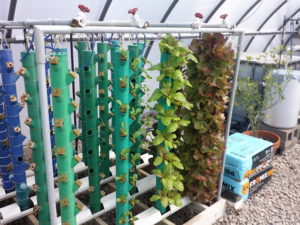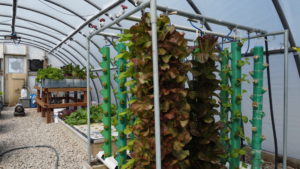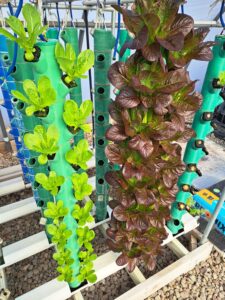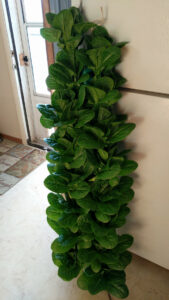That over-priced flawed design was the inspiration for the 3D G-Tower and it didn’t take a whole lot of time to prove which design was better. While 3D G-Tower may look like it’s just plumbing parts, it most definitely is not because there aren’t any plumbing parts that could accurately duplicate the design. Simply take a look inside of one and you’ll see! PVC plumbing parts would also be about 4 times heavier and cost much more.


Best of all, no need for any of that Poly-Flo pond filter media in these towers! Or, “ZipGrow Matrix Media” as they like to call it. Plant roots and the ridges in the inside tower walls create the biological and mechanical filtration for aquaponics systems. Every time you replant a tower, you are also changing your solids filter, no media cleaning necessary.
Before you start sifting through this page searching for the phrase “food grade”, let’s answer that question for you right away. PLA filament used in 3D printing is made from corn. It’s so food safe that it’s actually made out of food! You should also keep in mind that all of that food grade plastic stuff only applies to food storage, not flower pots or planter boxes.
Take the time to watch the Assembly and Usage video linked in the home page here. By the end of the video, you will see why 3D G-Tower is a much smarter design and why it works better for farmers markets and other produce delivery operations.
You can actually fit more plants in a 4 foot 3D G-Tower than you can fit in a 5 foot ZipGrow tower due to the offset planter pockets, you have two columns of plants separated by 90 degrees rather than just one single column.


Towers accept any kind of 1.5 inch plant starter plug or netpot, no need for a big steel hook to pull media in and out of the tower because it’s not needed to hold your plants in the tower. The 3D models also include two other tower sizes that use a 2 inch plug or netpot, these are used for larger and longer standing plants.
Hop on over to the Products and Services page here to either purchase a 4-pack of pre-printed towers, or a 3D model lifetime support license. Keep in mind that no towers are kept in stock, these are printed by the order and have a 3~4 week lead time to accommodate for filament shipping time and tower printing time.
Pre-printed towers are only available in 4-packs and require assembly (and optional gluing, if so desired), assembled towers are too risky to ship.
